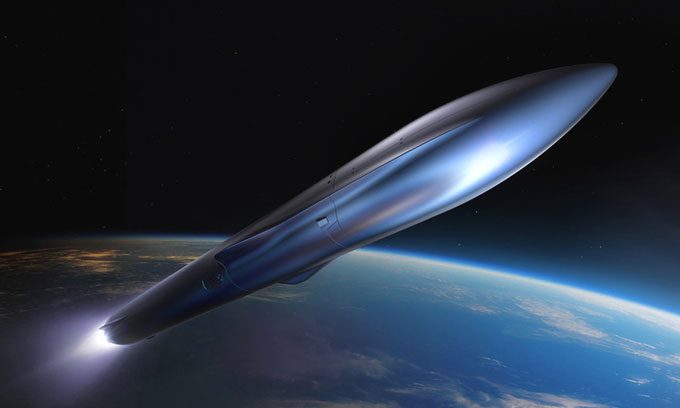Relativity Space Unveils New Two-Stage Rocket Design Capable of Carrying 20,000 kg of Cargo to Low Earth Orbit.
Relativity Space, a startup based in Southern California, revealed detailed information about its new two-stage rocket named Terran R on June 8. The Terran R will facilitate the company’s extraterrestrial goals, including sending humans to Mars.

Design of the Terran R two-stage rocket by Relativity Space. (Photo: Relativity Space).
Terran R represents a significant advancement in power and efficiency compared to Terran 1, the two-stage rocket that Relativity Space plans to launch into space later this year. The company has secured contracts with 9 customers for cargo deliveries using Terran 1, according to a company representative.
Terran 1 stands 35 meters tall, is 2.3 meters wide, and can carry a maximum of 1,250 kg of cargo to low Earth orbit. The first stage of the rocket is equipped with 9 Aeon 1 engines from Relativity Space, while the upper stage features a vacuum-optimized Aeon engine.
The engines utilize liquid oxygen and methane as fuel. They are 3D printed, just like the rest of the rocket. This manufacturing strategy enables Relativity Space to produce rockets with only 1/100 the number of components compared to competitors and to deliver a complete rocket in less than 60 days, according to the company representative.
The Terran R is expected to launch into space for the first time in 2024. Similar to Terran 1, it will depart from the launch pad at Cape Canaveral Air Force Station in Florida. The Terran R is 66 meters tall, 4.9 meters wide, and has the capacity to carry over 20,000 kg of cargo to low Earth orbit. The first stage is equipped with 7 Aeon R engines – the powerful “sibling” of the Aeon 1. The upper stage will feature a vacuum Aeon engine similar to that of Terran 1.
The payload capacity of Terran R is comparable to SpaceX’s Falcon 9 rocket, a pioneer in reusable rockets. The first stage of Falcon 9 has successfully returned and landed on Earth multiple times after launching satellites into orbit. For instance, last month, the booster B1051 set a record by landing for the tenth time. However, Relativity Space aims to go further with the Terran R. The entire rocket – first stage, second stage, and payload fairing – will all be reusable.
“There is an organic relationship between 3D printing technology and reusability. It gives us a tremendous advantage in designing the best fully reusable rocket possible,” shared Tim Ellis, co-founder and CEO of Relativity Space.





















































